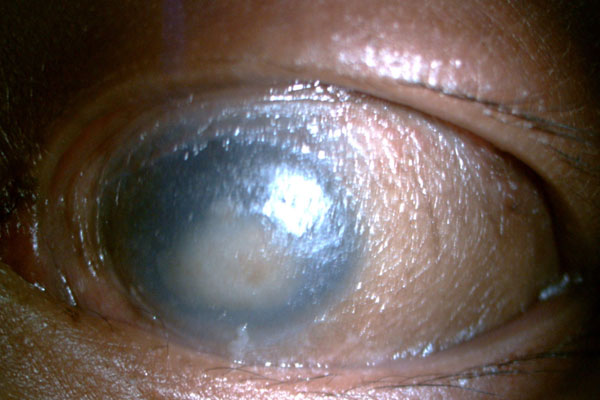Isolated bilateral congenital lacrimal gland agenesis presenting as dry eye in childhood: a rare entity
Abstract
We report the case of a 1-year-old child who presented with complaints of redness and defective vision since birth. The child had no systemic abnormalities. On examination, complete keratinization of the bulbar conjunctiva and cornea was noted with dry, lustreless and irregular surface. Corneal sensation was intact. Orbital MRI revealed bilateral agenesis of the lacrimal gland with normal salivary glands. The child was given vitamin supplementation, cyclosporine eye drops along with lubricants and tape tarsorrhaphy in the night. Permanent occlusion of both the lower puncta was done. There was decreased ocular surface congestion, with frequent wetting of the ocular surface, which continued in the months to follow. We present a case of isolated bilateral lacrimal gland agenesis with normal salivary glands, a rare cause of dry eye in children. An early diagnosis and conservative management can help in maintaining functional vision in such cases.
References
Milunsky JM, Lee VW, Siegel BS, Milunsky A. Agenesis or hypoplasia of major salivary and lacrimal glands. Am J Med Genet. 1990;37:371-374.
Kim SH, Hwang S, Kweon S, Kim TK, Oh J. Two cases of lacrimal gland agenesis in the same family—clinicoradiologic findings and management. Can J Ophthalmol. 2005;40:502-505.
Caccamise WC, Townes PL. Congenital absence of the lacrimal puncta associated with alacrima and aptyalism. Am J Ophthalmol. 1980:89:62-65.
Ferreira AP, Gomez RS, Castro WH, Calixto NS, Silva RA, Aguiar MJ. Congenital absence of lacrimal puncta and salivary glands: report of a Brazilian family and review. Am J Med Genet. 2000;94:32-34.
Mac Cord Medina F, Silvestre de Castro R, Leite SC, Rocha EM, de Melo Rocha G. Management of dry eye related to systemic diseases in childhood and long term follow up. Acta Ophthalmol Scand. 2007;85:739-744.
Mondino BJ, Brown SI. Hereditary congenital alacrima. Arch Ophthalmol. 1976;94:1478.
Wiedemann HR, Drescher J. LADD syndrome: report of new cases and review of the clinical spectrum. Eur J Pediatr. 1986;144:579-582.
Entesarian M, Matsson H, Klar J, et al. Mutations in the gene encoding fibroblast growth factor 10 are associated with aplasia of the lacrimal and salivary glands. Nat Genet. 2005;37:125-127.

Copyright (c) 2020 Sowmya Peri, Ravi Chandra

This work is licensed under a Creative Commons Attribution 4.0 International License.
Authors who publish with this journal agree to the following terms:
- Authors retain copyright and grant the journal right of first publication, with the work twelve (12) months after publication simultaneously licensed under a Creative Commons Attribution License that allows others to share the work with an acknowledgement of the work's authorship and initial publication in this journal.
- Authors are able to enter into separate, additional contractual arrangements for the non-exclusive distribution of the journal's published version of the work (e.g., post it to an institutional repository or publish it in a book), with an acknowledgement of its initial publication in this journal.
- Authors are permitted and encouraged to post their work online (e.g., in institutional repositories or on their website) prior to and during the submission process, as it can lead to productive exchanges, as well as earlier and greater citation of published work (See The Effect of Open Access).


